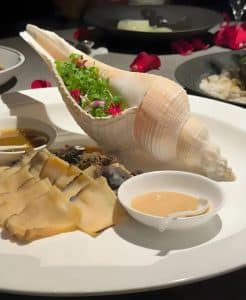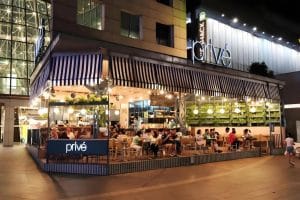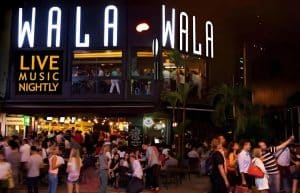If you’ve ever walked the streets of Singapore, you’ll notice the city’s unique “taste map”—from the aroma of curry wafting from hawker centers, to the artfully plated Japanese sashimi in Michelin-starred restaurants, and the rich coffee scent lingering in cafes.
For aspiring restaurateurs, this seemingly vibrant market hides complex challenges: high rents, labor costs, fierce competition, and intricate licensing and compliance systems often deter newcomers.
Yet for strategic entrepreneurs who leverage resources wisely, Singapore remains an ideal destination for global culinary ventures. Today, we’ll guide you through the entire process of opening a restaurant—from market trends and licensing systems to operational strategies—helping you establish a firm foothold in Singapore’s culinary landscape.

I. Singapore’s Culinary Landscape:
Unveiling a Market of Opportunities and Challenges
A decade ago, Chinese restaurants in Singapore primarily served Fujianese, Cantonese, and Hainanese cuisine, leaving limited options for other regional cuisines.
Today, Sichuan, Hunan, Japanese cuisine, Korean barbecue, Italian pizza, Indian curry, and diverse other cuisines line every street and alley. Even on a single street in the eastern district, you might spot Spanish, Italian, and Indian restaurants side by side. Consumers’ palates have grown increasingly adventurous, demanding authenticity, flavor, and value for money.
Following the pandemic’s peak, consumer spending rebounded strongly, bringing a brief resurgence to the food service industry. According to Euromonitor data, Singapore’s consumer food service retail sales grew by 13.3% in 2021 and 12.4% in 2022.
However, this growth momentum slowed to 5.7% in 2023 and further declined to 1.2% in 2024. A slight contraction of 0.1% is projected for 2025. This indicates that the post-pandemic tailwinds have faded, and competition in the food and beverage market has intensified.



Image source: Internet, remove if infringing
Meanwhile, cost pressures remain an inescapable reality for the industry:
1. Soaring Rent
Rental rates for prime retail spaces in bustling commercial districts and shopping malls climb annually. A single misstep could see profit margins entirely devoured by lease payments.
2. Labor Shortages
Positions like kitchen staff, servers, and dishwashers face recruitment difficulties, with wages continuously rising;
3. High Import Costs for Ingredients
Especially for Michelin-starred and high-end restaurants, maintaining ingredient quality requires sourcing from origin countries, increasing procurement costs;
4. Changing Consumer Behavior
A stronger Singapore dollar leads tourists to favor more affordable eateries, while locals may opt to travel and spend in neighboring countries.
However, opportunities persist. Asian cuisines maintain absolute dominance in the full-service restaurant market, generating S$1.427 billion in retail sales. Within the partial-service segment, Japanese cuisine remains particularly popular, with brands like Sushi Express, Umi Sushi, and Yoshinoya securing strong market positions.
For international food brands, Singapore serves as a crucial Southeast Asian market. Brands from China, Japan, South Korea, as well as Europe and the US are all eyeing this market, seeking to gain a share.
Precisely because of the fierce competition, and precisely because of its diversity and openness, Singapore’s food and beverage market still presents ample opportunities for experienced and resourceful enterprises. The key lies in finding your entry point: location, menu positioning, brand identity, and alignment with the local market.

Source: Internet, removed upon request

II. Avoiding Pitfalls When Opening a Restaurant:
The Complete Guide to Singapore Food and Beverage Licenses
Opening a restaurant in Singapore requires not only consideration of taste, market, and costs, but also navigating a series of licensing and compliance requirements. The country’s food and beverage licensing system is comprehensive and stringent, primarily covering the following aspects:
1. Food Shop License (SFA Food License)
All restaurants, cafes, and hawker stalls must obtain a Food Shop Licence (FSL) to operate legally. Licenses fall into two categories:
① Stall Licence (Small Licence): Suitable for small coffee shops or hawker center stalls. Only Singapore citizens or permanent residents may apply, and foreign employees cannot be hired.
② Restaurant License (Major License): Suitable for standalone establishments, permits hiring of Employment Pass (EP)/S Pass employees. Application requirements are stricter, necessitating submission of store floor plans, fire safety plans, and other documentation.

Source: Lianhe Zaobao
2. MUIS Halal Certification
If a restaurant plans to serve halal food, it must obtain MUIS Halal Certification (Halal License). Requirements include:
Using halal-certified ingredients with supporting documentation;
Having at least 2-3 Muslim kitchen staff holding HalMQ certification;
Compliance with halal food quality management system standards.
This certification is crucial for attracting Muslim customers and enhances a restaurant’s market competitiveness.
3. Liquor License
Restaurants planning to sell beer, wine, or spirits must apply for a liquor license from the Liquor Licensing Board. Different license types dictate permitted sales hours, sales methods, and the types of alcoholic beverages that can be served. Fees range from S$110 to S$880 depending on the license category.
4. Import Permit
Restaurants importing ingredients from overseas (such as fish, meat, fruits, vegetables, edible eggs, etc.) must apply for an import permit through GoBusiness to ensure compliance with Singapore’s food safety standards.
5. Accounting and Corporate Regulatory Authority (ACRA) Registration
All food and beverage businesses—whether sole proprietorships, partnerships, or corporations—must register with ACRA to ensure legal operation, eligibility for government grants, and participation in tenders. Registration fees are approximately S$300.
6. WSQ Food Hygiene Training
Food service operators and chefs must complete WSQ Food Hygiene Training, comprising 6 hours of classroom learning and a 1.5-hour assessment. Upon passing, they receive a Statement of Achievement (SOA) valid for 5 years.
7. Public Entertainment License (Optional)
Restaurants offering entertainment activities such as karaoke, live music, or gaming machines must apply for a Public Entertainment License, with fees ranging from S$44 to S$960.
Securing these licenses and permits not only enables legal operation but also enhances operational efficiency while mitigating future risks of fines or business suspension. For foreign enterprises, it is advisable to engage professional agencies to facilitate the entire process—from company registration and license applications to employee pass processing—ensuring a smooth workflow.

Source: Lianhe Zaobao

III. From Opening to Viral Success:
Restaurant Operation Strategies and Winning Secrets
Obtaining licenses is merely the first step in opening a restaurant in Singapore. The real challenge lies in surviving—and thriving—amid fierce competition.
1. Location and Restaurant Format Strategy
The food and beverage market heavily relies on foot traffic:
① Small eateries should prioritize street-front or compact commercial areas: lower rents with stable foot traffic;
② High-end restaurants should target popular shopping malls: attracts tourists but commands high rents, requiring precise positioning.
Experienced operators flexibly employ the “Letter of Intent + Layout Plan + Minimum Renovation Cost” strategy. Even if profitability falls short, they can swiftly adjust layouts or change partners.
2. Brand Experience and Emotional Connection
In recent years, Singaporean consumers increasingly value emotional bonds with brands and dining experiences:
① Collaborative events, themed dining, and collectible merchandise enhance brand memorability;
② Master cooking classes, chef interactions, and open kitchens reveal the stories behind dishes;
③ Social media marketing transforms consumer engagement into word-of-mouth promotion.

Source: Lianhe Zaobao
3. Digitalization and Food Delivery Platforms
Digital transformation is an inevitable trend in restaurant operations:
① Food delivery platforms: GrabFood, Foodpanda, and Deliveroo provide restaurants with new revenue streams;
② Smart management: AI generates data reports on inventory, logistics, service hours, etc., analyzing store operations to optimize service and cost control;
③ Automated kitchens and self-service ordering: Enhance efficiency and alleviate labor shortages.
4. Government Grants and Incentives
Singapore offers multiple grants and incentives for food and beverage businesses:
① Productivity Solutions Grant (PSG): Supports automation equipment purchases with up to 80% subsidy;
② Enterprise Development Grant (EDG): Funds business upgrades or overseas expansion with 90% subsidy;
③ Hawker Productivity Grant (HPG): Supports automation upgrades for hawker centers and stalls;
④ Digital Resilience Bonus (DRB): S$10,000 reward for installing digital solutions in retail or food service premises;
⑤ Jobs Growth Incentive (JGI): Wage subsidies for local employees to reduce labor costs.
Strategic utilization of these policies not only eases operational burdens but also enhances business competitiveness in the market.

Source: Lianhe Zaobao
Conclusion: Restaurant Entrepreneurship Is a Long-Term Endeavor
Opening a restaurant in Singapore is far more than just “serving food on a plate.” It’s a sustained effort involving market analysis, location strategy, licensing procedures, digital operations, brand building, and policy utilization. For experienced, resource-savvy, and innovative food and beverage businesses, this city remains full of opportunities.
The entry of foreign brands enriches the market, fostering diversity and heightened competition; while local eateries must continuously refine their innovation and service experience. From hawker center meals to Michelin-starred restaurants, all face similar challenges: high rents, rising costs, discerning consumers, and complex licensing.
Yet for those who master market dynamics, regulatory strategies, and operational know-how, Singapore’s food scene remains a coveted destination for Southeast Asian entrepreneurs. Seize opportunities and stay ahead of trends—your restaurant could become the next street-talked culinary legend.
Note: References sourced from Singapore’s ACRA, SFA, WSQ, SPW, MUIS, GoBusiness, IRAS, Lianhe Zaobao, and compiled news reports. Reproduction requires attribution; contact for removal if infringing…….
